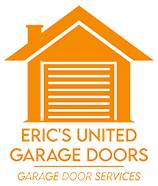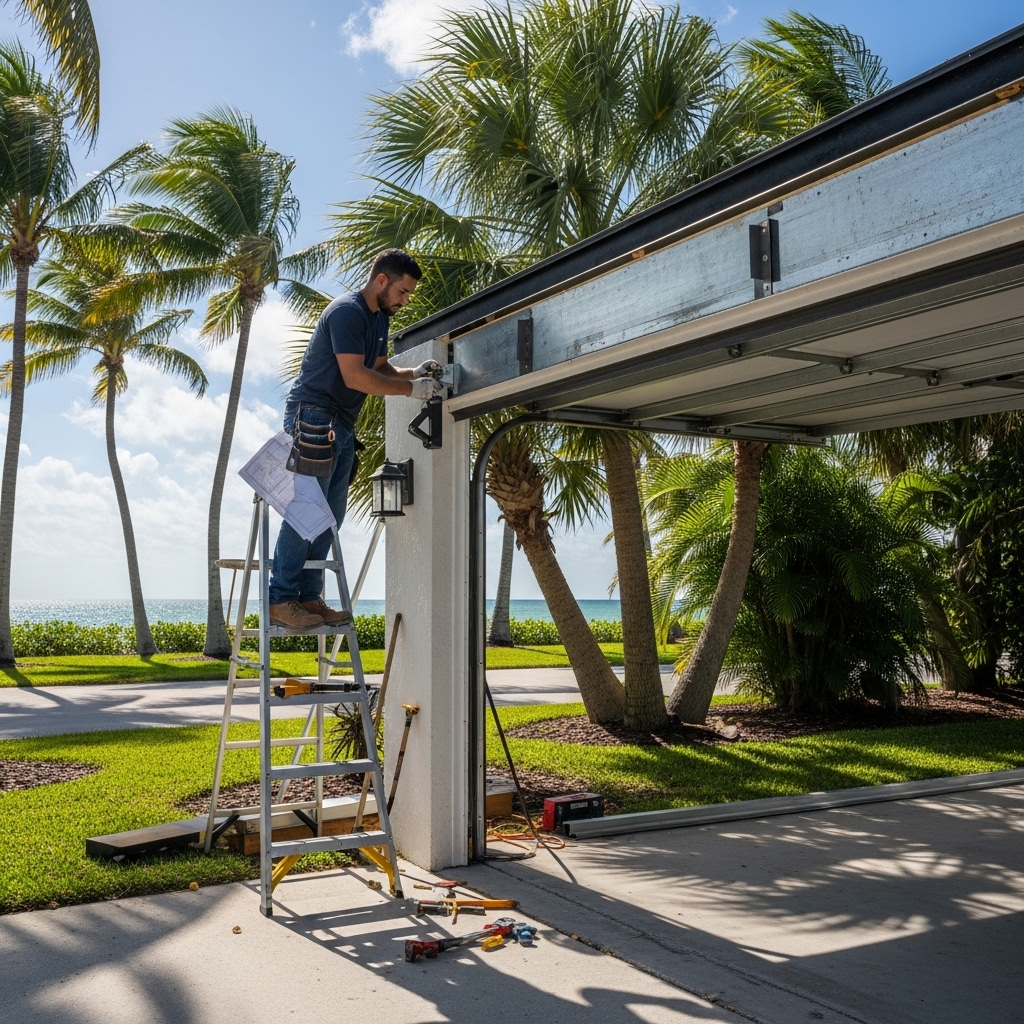Your Local Guide to Garage Door Installation Near Me in Fort Lauderdale, Florida
When you search for garage door installation near me in Fort Lauderdale, you want more than a quick fix. You want reliability, safety, curb appeal, and a professional outcome that stands up to coastal weather. From hurricane-rated materials to precise opener calibration, the right team makes all the difference. Early in your planning, familiarize yourself with the essentials of garage door installation so you can make informed choices about materials, insulation, and security features that match South Florida living.
Fort Lauderdale homeowners balance aesthetics and performance. Nearby installers can help you evaluate architecture, neighborhood styles, and performance needs. That local experience matters for wind-load requirements, building permits, and choosing hardware that can withstand salt air. This guide explains how to pick the right door, what to expect during installation, and how to maintain a smooth, quiet system for years.
Why Local Expertise Matters in Fort Lauderdale
Working with a nearby installer means faster consultations, better site assessments, and a team that understands Fort Lauderdale’s coastal conditions. Local pros know how humidity affects wood swelling, how salt air can accelerate corrosion on hardware, and when insulated steel or composite doors make more sense than traditional wood. They also recognize the nuances of HOA architectural consistency, varied lot setbacks, and garage door size standards common to local subdivisions and waterfront homes.
A reputable local installer will assess driveway slope, opening dimensions, header condition, and the integrity of wall studs or masonry. They will also verify that the torsion spring placement, track alignment, and opener mounting points are suitable for both the door weight and the daily usage patterns of your household. That attention to detail yields a quiet, safe, and durable system.
Climate, Codes, and Wind-Load Considerations
Fort Lauderdale’s position along the Atlantic means wind-load compliance is not just a best practice; it is essential. Garage doors are significant openings in your home envelope. If they fail during severe weather, pressure changes can damage roof structures and interiors. Your installer should advise on hurricane-rated doors, reinforced tracks, heavy-gauge hinges, and impact-resistant panels, as well as the proper anchoring hardware for your wall construction.
Code compliance also covers opener safety features like photo-eye sensors, auto-reverse functions, and proper force settings. Local pros ensure that every element meets or exceeds the applicable regulations. They will help you secure necessary permits and provide documentation for inspections, a step that protects your investment and supports your insurance requirements.
Choosing the Right Door Material and Style
The right door blends appearance and performance. Materials include steel, aluminum, wood, and composite. Steel doors offer strength and a variety of finishes. Aluminum is lightweight and corrosion-resistant, especially useful near the coast. Wood doors deliver warmth and traditional charm but require more maintenance. Composite doors mimic wood grain without as much upkeep, making them a compelling option in humid climates.
- Contemporary full-view aluminum doors complement modern coastal designs and improve natural light in the garage.
- Carriage-house styles suit classic and transitional homes, offering decorative hardware and window options.
- Raised-panel steel doors balance durability, affordability, and insulation choices for year-round comfort.
- Custom designs allow for unique glass placements, mixed materials, and color palettes that coordinate with your entry door and shutters.
Insulation and Energy Efficiency
Insulation matters more than you may think, even in South Florida. An insulated garage door helps regulate temperatures, reduces noise from the street, and improves the performance of air-conditioned bonus spaces adjacent to the garage. Polyurethane foam cores offer superior R-values and structural rigidity, while polystyrene panels provide dependable baseline performance. Your installer can explain how insulation edges, thermal breaks, and weatherstripping minimize drafts and create a tighter seal around the door.
Consider how you use your garage. If you plan to work out, store sensitive items, or use the space as a hobby room, an insulated door with superior seals can significantly improve comfort and cut noise that travels into living areas.
Safety First: Springs, Tracks, and Balance
Garage door systems rely on counterbalance, typically achieved with torsion springs. Correct spring sizing ensures the door can be lifted smoothly by hand and by the opener. If springs are undersized, the opener works too hard and wears out sooner. If they are oversized, the door may not settle properly. Professional installers calculate spring and cable sizes based on door weight and height. They also ensure tracks are plumb and level, fasteners are properly anchored, and safety cables are present on extension spring systems.
Balance tests should be conducted before and after installation. A properly balanced door will remain in place when raised halfway. This test helps verify that the springs and cables are correctly tensioned, that friction in rollers is minimal, and that the opener will not be overburdened during daily use.
Smart Openers and Everyday Convenience
Today’s openers come with smartphone control, battery backup, and quiet drive systems. Belt-drive openers are known for smooth operation, while direct-drive systems minimize vibration in homes with rooms above the garage. Battery backup ensures you can open and close the door during power outages, important during storm season. Smart features allow you to check the door’s status, receive alerts, and grant temporary access to visitors or deliveries.
For multicar households, consider multiple remotes, a wireless entry keypad, and integration with home automation platforms. Ask your installer to configure travel limits, force settings, and safety sensors to meet manufacturer specifications and local safety standards.
The Installation Process Explained
- Site preparation: Your installer verifies the opening size, clears obstacles, confirms power availability for the opener, and protects surrounding surfaces.
- Removal of the old door: Panels, hardware, and springs are carefully disengaged and disposed of according to local guidelines.
- Track and spring setup: New tracks are aligned and anchored. Torsion tubes, drums, and springs are sized and installed per door specifications.
- Panel stacking and alignment: Panels are placed, hinges installed, and rollers seated in tracks. The door is leveled and checked for consistent reveals.
- Opener installation: The rail, head unit, and mounting brackets are set, then force and travel limits are tuned.
- Weather sealing: Bottom seals, side vinyls, and top seals are installed to reduce drafts and moisture intrusion.
- Safety testing: Photo eyes, auto-reverse, and manual release functions are tested. Balance checks confirm proper spring tension.
- Homeowner orientation: Your installer demonstrates operation, safety features, routine maintenance, and emergency procedures.
Professional crews work methodically and prioritize safety. A thorough job reduces noise, improves longevity, and helps you avoid callbacks for misalignment or sensor issues. For deeper context on materials and best practices, explore professional perspectives on garage door installation as you evaluate options and schedule your project.
Preparing Your Home for Installation Day
Clear the area around the garage door and remove vehicles from the driveway to give installers room to work. Secure pets, cover stored items you want to protect from dust, and make sure the ceiling area near the opener location is accessible. If you have a vehicle with a built-in transmitter, find the manual for programming so the technician can help synchronize it with your new opener.
Discuss any special considerations before the crew arrives, such as low headroom, attic access, or ceiling storage racks that could interfere with track placement. Good communication helps the process run smoothly and ensures you end up with a result that fits your daily routine.
Maintenance for Long-Term Performance
Regular maintenance extends the life of your door and opener. A biannual check of hinge screws, roller bearings, and spring tension can prevent premature wear. Lightly lubricate metal rollers, hinges, and the torsion spring with a garage door lubricant. Wipe photo-eye sensors clean and verify alignment by checking the indicator lights. Inspect weatherstripping for cracking or gaps, and replace pieces that no longer provide a tight seal.
- Listen for unusual noises such as grinding or rattling, which may indicate loose hardware or misalignment.
- Test the auto-reverse safety by placing a low, solid object in the door’s path and confirming that it reverses on contact.
- Check the balance by disconnecting the opener and lifting the door manually; it should feel evenly weighted.
- Review the opener’s battery backup condition, if applicable, and test it ahead of hurricane season.
Common Pitfalls to Avoid
Avoid DIY torsion spring work, which can be dangerous. Do not reuse worn tracks or mismatched hardware, as this can lead to binding, premature wear, or safety hazards. Never bypass safety sensors to “fix” a nuisance reversal; instead, address alignment or interference. If your door becomes unusually heavy, contact a professional to examine the springs and balance rather than increasing opener force settings.
Also, match your door’s finish to the local environment. Powder-coated hardware and corrosion-resistant fasteners hold up better in salty air. Selecting properly rated components the first time reduces future maintenance and improves peace of mind.
Frequently Asked Questions
Q: How long does a typical installation take? A: Most standard residential installations are completed in a single day, including removal of the old door, setup of hardware, opener installation, and safety testing. Complex sites or custom doors may require additional time.
Q: Do I need a permit in Fort Lauderdale? A: Many garage door replacements and new installations require permits. A knowledgeable local installer can guide you through the process and coordinate inspections where needed.
Q: What makes a door hurricane-rated? A: Reinforced panels, stronger tracks and hinges, and specific anchoring systems contribute to resistance against wind pressure and debris. Look for products tested to appropriate wind-load standards.
Q: Is an insulated door necessary in Florida? A: While winters are mild, insulation helps control heat transfer, improves noise reduction, and strengthens panels. It is especially beneficial if you use the garage as a workspace or have conditioned areas nearby.
Q: Which opener type is best? A: Belt-drive openers are quiet and popular for attached garages. Direct-drive models minimize vibration. Consider smart features and battery backup for convenience and resilience during outages.
Q: Can I reuse my existing tracks? A: It is generally advisable to replace tracks with the new door to ensure proper fit and performance. Mixing components can lead to misalignment and increased wear.
Q: How often should I service the system? A: A professional tune-up once a year helps catch minor issues early. Homeowners can perform visual checks and light lubrication every six months.
Q: What about windows in the door? A: Decorative lites add curb appeal and natural light. Choose impact-rated or laminated glass when appropriate for safety and durability.
Q: Will a new door improve my home’s value? A: Yes. A fresh, well-chosen door enhances curb appeal and perceived quality. Buyers notice quiet operation and smart features during showings.
Ready to Upgrade Your Fort Lauderdale Garage?
If you are looking for a dependable team near you, choose local expertise that understands wind-load requirements, corrosion resistance, and everyday convenience. From the first measurement to the final safety test, a professional approach ensures reliable performance, better curb appeal, and peace of mind. Get started by exploring expert garage door installation solutions, schedule a consultation, and enjoy a smoother, safer entrance every day.

